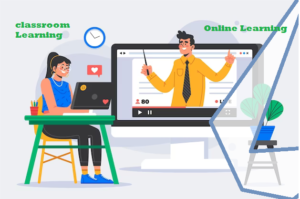The choice between online and classroom learning depends on individual preferences, learning styles, and circumstances. While both have distinct advantages, the best option varies based on factors like flexibility, affordability, interaction, and the nature of the subject being studied.
1. Online Learning – Best for Flexibility and Affordability
Online learning is ideal for students and professionals who need a flexible schedule. It allows learners to access course materials anytime and anywhere, making balancing education with work, family, or other commitments easier. Additionally, online courses are often more affordable than traditional classroom programs since they eliminate expenses related to commuting, accommodation, and physical study materials.
However, online learning requires self-discipline, motivation, and a reliable internet connection. Some learners may struggle to stay engaged and complete their courses without direct supervision and a structured environment.
2. Classroom Learning – Best for Structured Learning and In-Person Interaction
Classroom learning provides a traditional, structured educational experience. It fosters better interaction between students and instructors, enabling immediate feedback, collaborative discussions, and hands-on learning. This method is particularly beneficial for subjects that require practical demonstrations, lab work, or group projects, such as medical studies, engineering, and the arts.
However, classroom learning has challenges like rigid schedules, higher costs (tuition, commuting, textbooks), and geographical limitations. It may not suit individuals needing a more flexible learning pace or prefer a self-directed approach.
3. The Hybrid Model – The Best of Both Worlds?
A blended approach, combining online and classroom learning, offers the most effective solution for many learners. A hybrid model allows students to benefit from in-person interaction while enjoying the flexibility and accessibility of online resources. Many universities and institutions now offer hybrid programs where theoretical concepts are taught online while practical sessions occur in a classroom or lab setting.
This model ensures students get a well-rounded education, balancing self-paced learning with structured engagement. It is particularly useful for professional development programs, university courses, and technical training.









 Evan John
Evan John